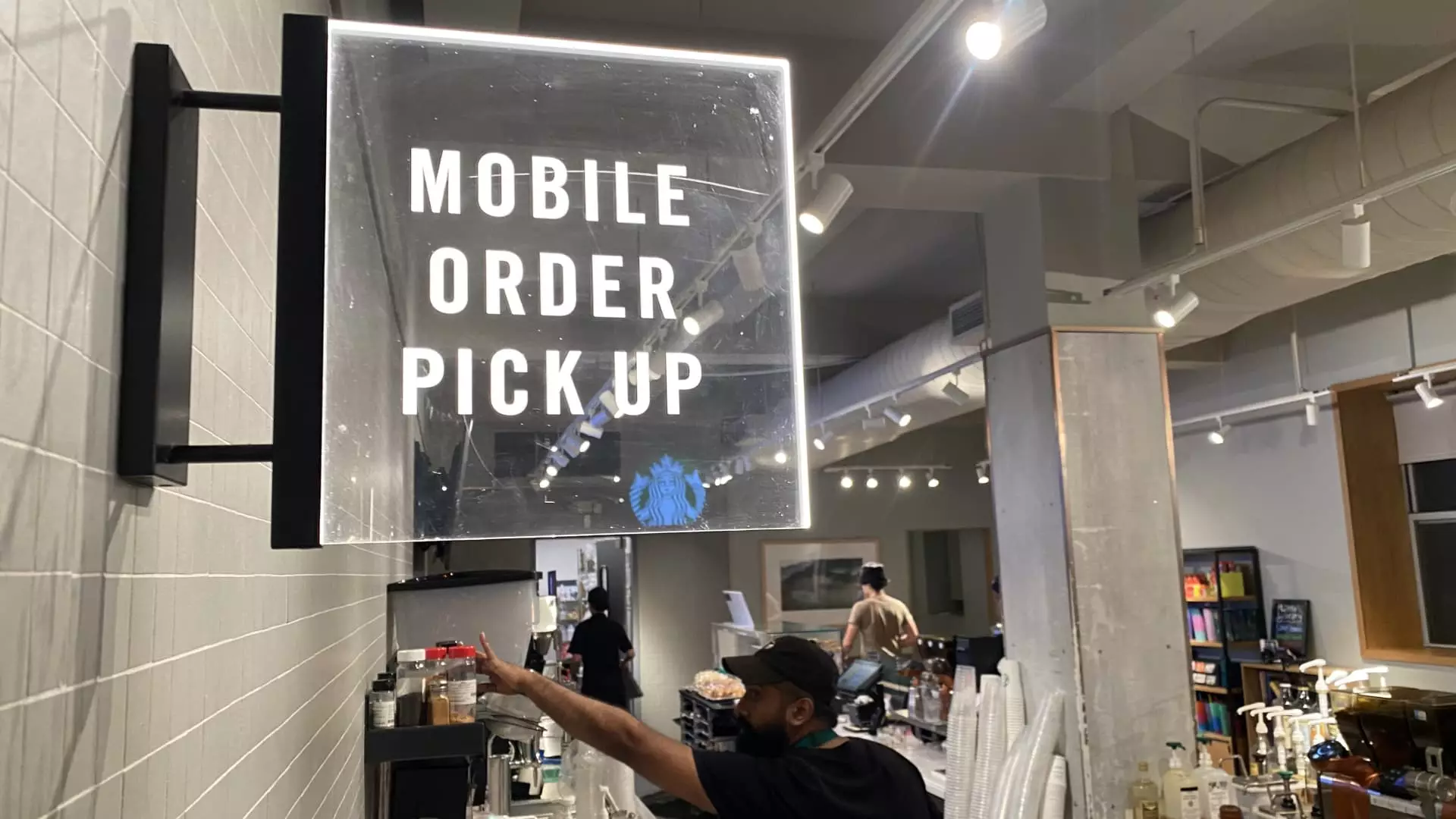Starbucks, a renowned coffee giant, has been facing operational challenges in recent times. The proliferation of mobile orders has led to overcrowded cafes, frustrated customers, and overwhelmed baristas. The incoming CEO, Brian Niccol, who is set to take over on Sept. 9, will have the daunting task of addressing these issues to revitalize the struggling company. One of the key reasons behind the chain’s sales decline is attributed to operational inefficiencies. Mobile orders, which account for approximately one-third of Starbucks’ total sales, have posed a significant challenge. While these orders tend to be more complex and profitable for Starbucks due to add-ons like cold foam or syrups, they consume more baristas’ time, leading to frustration among employees and customers alike.
Former CEO Howard Schultz, who remains involved with the company, has identified the mobile app as a major Achilles heel for Starbucks. Schultz emphasized the need to make mobile orders more efficient to alleviate the congestion in cafes. The shift towards mobile ordering has disrupted Starbucks’ positioning as a “third place” between work and home, as customers increasingly opt for the convenience of ordering on-the-go. However, Starbucks failed to adapt its operations to accommodate this change in consumer behavior, leading to inefficiencies and a decline in customer experience.
The previous CEO, Laxman Narasimhan, acknowledged the company’s struggle to meet demand in the morning, resulting in long wait times that deterred customers. The failure to anticipate technological advancements and adjust operations accordingly has been a significant shortcoming for Starbucks. Despite investments in technology and digital sales under Kevin Johnson’s leadership, the company faced challenges in optimizing its restaurant operations. Schultz, who stepped back in as interim CEO in 2022, criticized the company for not investing ahead of the curve and neglecting the impact of the mobile app on customer experience.
Baristas Under Pressure
The influx of digital orders has exacerbated the pressure on Starbucks baristas, leading to burnout and employee dissatisfaction. Some employees have even resorted to unionizing in response to the challenges posed by the mobile app. Starbucks Workers United, a union representing workers at hundreds of U.S. stores, advocated for changes such as turning off mobile ordering during promotions to ease the burden on employees. The need to strike a balance between digital orders and in-store customer experience remains a critical area for improvement.
Lessons from Chipotle
In contrast to Starbucks, Chipotle has successfully navigated the digital ordering landscape, with online orders accounting for a significant portion of its revenue. The company’s strategic initiatives, such as installing dedicated prep lines for digital orders and implementing drive-thru lanes for online pickups, have streamlined operations and enhanced customer experience. Brian Niccol’s tenure at Chipotle saw the introduction of innovative promotions and digital-only menu items, demonstrating the effectiveness of leveraging technology to drive sales growth.
To address the challenges at Starbucks, Niccol must prioritize enhancing the customer experience through improved operational efficiency. Implementing measures to expedite service, such as the rollout of new equipment and technology, can help alleviate bottlenecks and reduce wait times for customers. Enhancements to the mobile app, such as real-time order tracking, can provide customers with more transparency and streamline the ordering process. Accelerating the installation of new equipment across Starbucks locations, as promised to investors, is crucial to improving service times and alleviating the strain on baristas.
Starbucks faces a critical juncture in addressing the operational challenges brought about by the surge in mobile orders. By drawing insights from past shortcomings and leveraging technology to enhance the customer experience, the company can revitalize its brand and restore its reputation as a leading coffee destination. The success of incoming CEO Brian Niccol hinges on his ability to implement strategic initiatives that prioritize efficiency, innovation, and customer satisfaction in the evolving landscape of digital ordering.


Leave a Reply